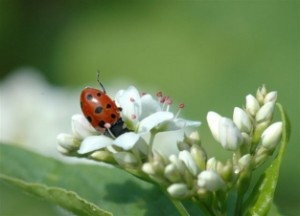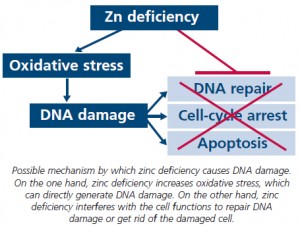Natural Balancing Act
 Before we tackle a problem, it’s often best to step back and look at the bigger picture. If we can understand the whole issue – its symptoms, causes and possible solutions – we’re usually better placed than if we concentrate solely on the problem.
Before we tackle a problem, it’s often best to step back and look at the bigger picture. If we can understand the whole issue – its symptoms, causes and possible solutions – we’re usually better placed than if we concentrate solely on the problem.
Agriculture works with things of nature…… with natural systems, with living biological species of plants and animals, with the natural environment. Nature, of course, is incredibly complex – even a tiny cell is more complex than any man-made machine.
The study of the way in which natural organisms (plants and animals) and their environment inter-relate is known as ecology. Like the gears and levers of a machine, each “part” of nature has its own tasks and functions.
Together, the “parts” form a larger entity – ecosystem, to use the terminology of ecology. An ecosystem works under certain natural laws, and a further problem or penalty follows if you break any of these. The better we understand ecosystems and how they operate, the more chance we can cope with problems – or, even better, avoid them.
In terms of agriculture, the most important natural system is the general food chain. The basic food cycle is very simple, and most of us are subconsciously aware of it.
Lets start with the organisms we are most familiar with – our domesticated animals, and ourselves. We consume mostly plant and animal material. Domestic animals eat plants, almost entirely. Plants, however, make their own food through the photosynthesis process. They do this within their leaves, using carbon dioxide, water, mineral nutrients and light energy.
However, the food chain could not operate if that’s all there was to it.
Animals produce what we commonly call waste, mostly manure and urine. Most crop plants also produce unused roots, stalks and leaves, manure and plant residues we call organic matter. This is returned to the soil where it decomposes into humus, forming natural food for plants, and providing them with nutrients they need to survive.
This cycle runs on energy just as a man-made machine does. Energy stored by the plant moves through each step of the system. It works under definite rules, and a flaw in any part of the system creates a problem at the next step. In other words, the “balance of nature” can be upset – and we can do this easily.

For now we will focus on one trace element that is essential in the metabolic process. We will look at others in latter editorials.
Take the example of a zinc deficiency in soil. If a plant doesn’t get enough zinc, problems occur. Zinc is needed in plant enzymes that are vital in the metabolic functions of cellular respiration. So a zinc-deficient plant will have poor cell functions, preventing it from becoming normal and healthy.
A zinc-deficient diet can lead to many problems in humans and animals – slower healing of wounds and skin irritations, major deficiency problems in the intestine, loss of hair, skin troubles.
Even if soil has a good level of zinc, only a minor amount may be available to plants. For instance, zinc is less available to plants in high-pH soils than in those with low pH. So, sickness in animals may be caused by zinc-deficient soil, or the low zinc content in the soil in which the plants grew?
Or maybe not – because these are just the symptoms. The real cause may be that something is wrong with the soil, that it has been affected by human interaction- such as using toxic chemicals in agriculture and modifying the pH level, or not returning enough manure and plant residues to the soil.
The good news is that whatever has happened can be fixed, and zinc availability can be restored to adequate levels. This creates an environment that develops healthy plants, which, in turn, helps keep animals and humans healthy too.
The science of ecology is based on the view that everything is connected to everything else – a view reflected in the way natural systems are organized, function and and continually interact.

